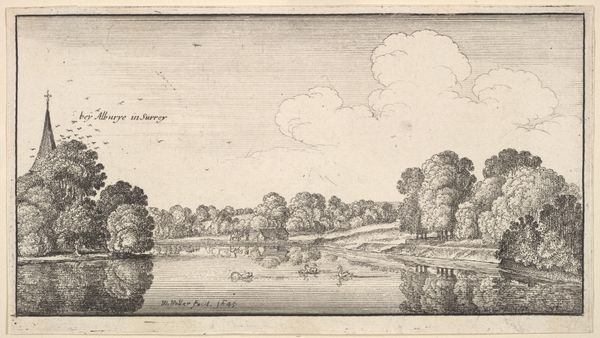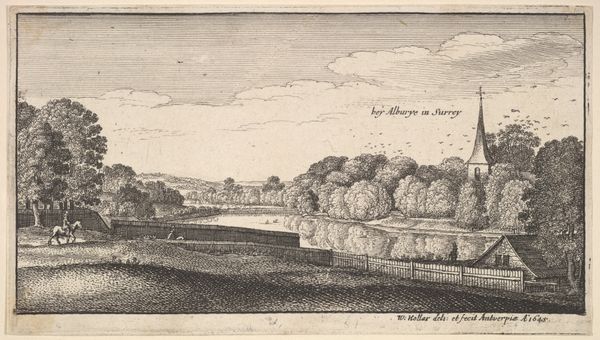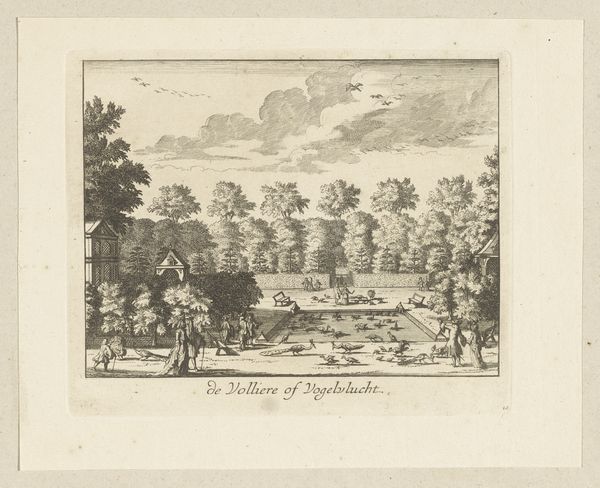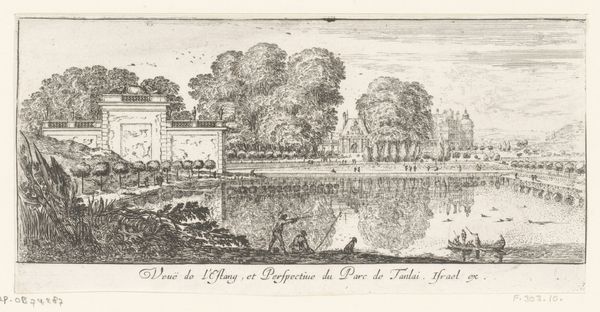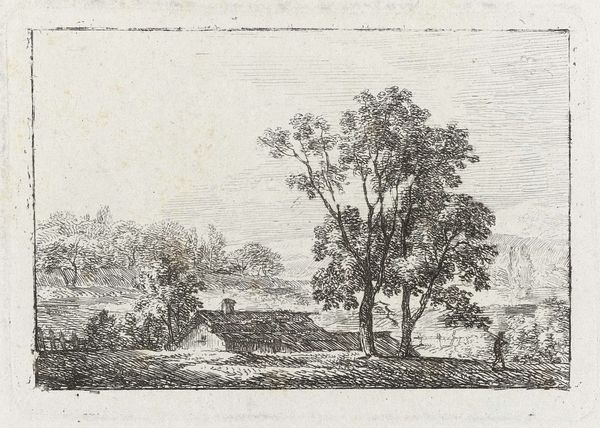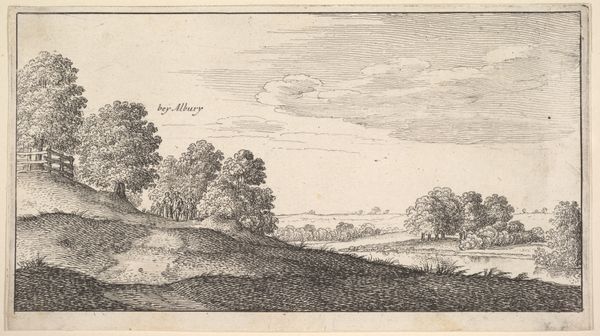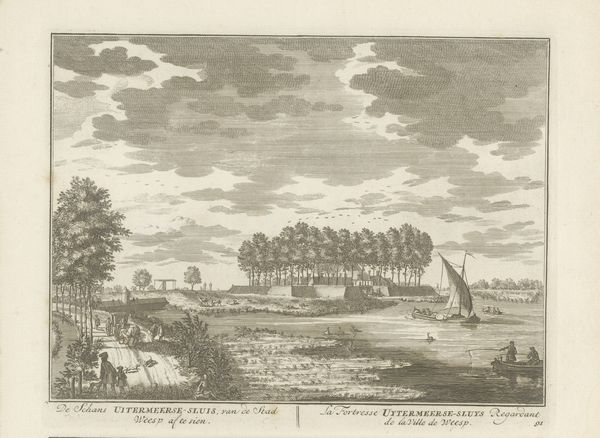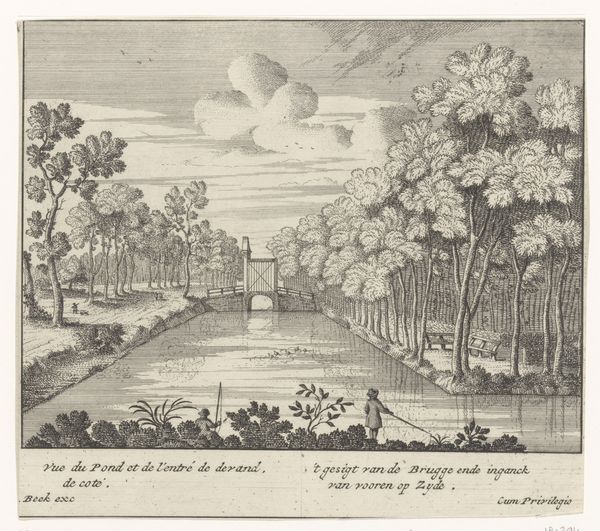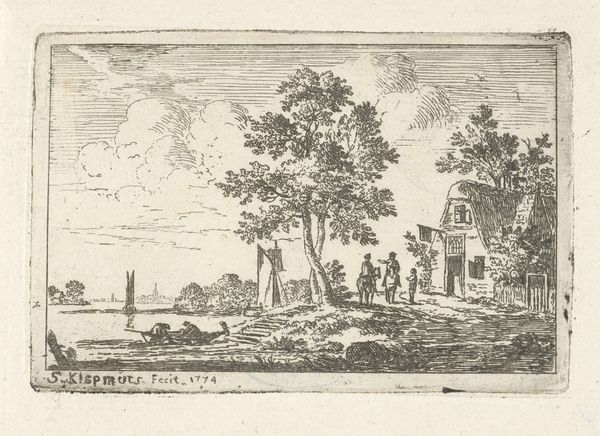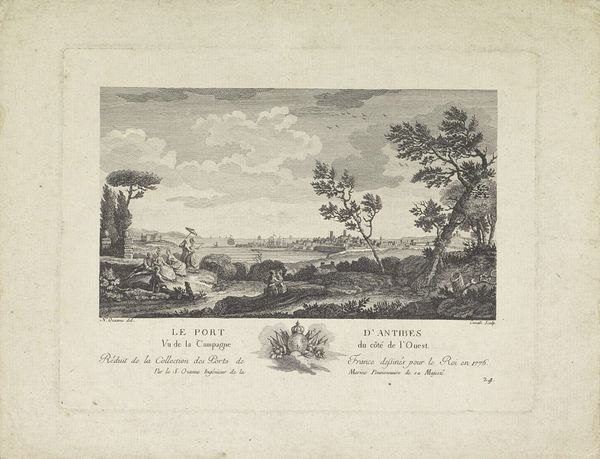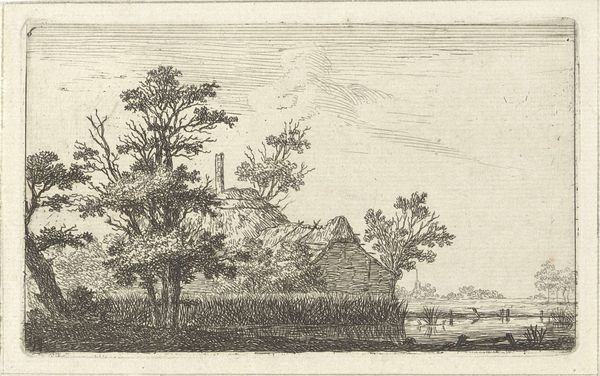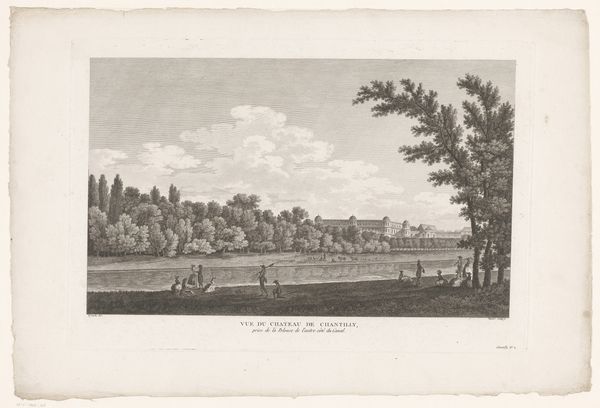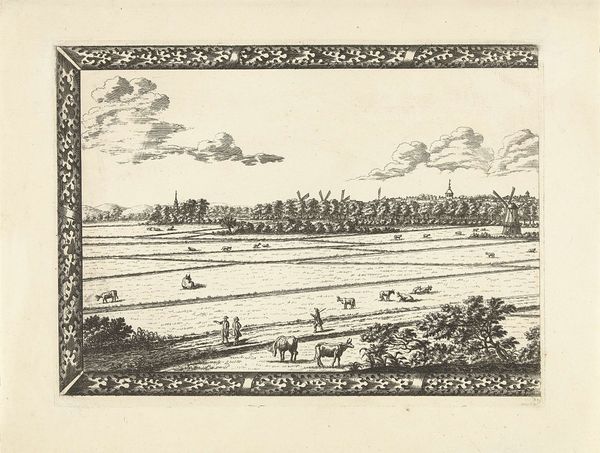
drawing, print, etching
#
drawing
#
baroque
# print
#
etching
#
landscape
Dimensions: Sheet: 1 7/8 × 6 1/2 in. (4.7 × 16.5 cm)
Copyright: Public Domain
Curator: Wenceslaus Hollar's etching, "Strasbourg: The Toll House," likely created between 1625 and 1677, presents a detailed vista. It's currently held in the Metropolitan Museum of Art. My initial feeling is a certain melancholy. What about you? Editor: I see the intricacy, the detail captured with what I'd call simple materials – an etched metal plate, paper, ink, and labor. It feels immediate despite being a print; the touch of the etcher is right there. Curator: Indeed. Hollar's prints served an important function beyond mere aesthetics; they were vehicles for disseminating knowledge. Landscape views became popular, shaping perceptions and even reinforcing civic pride or imperial ambitions. How do you read that from this print, specifically? Editor: The clarity with which the building, likely a toll house, is represented. This isn't a romanticized, idealized scene; it's a place of economic activity, regulated passage. The means of exchange shaped how this scene would have been used and consumed. Curator: Precisely. Hollar, working often on commission, provided these images to a growing mercantile class and aristocracy hungry for views of the world, both near and far. The image of Strasbourg becomes almost like a brand. Editor: And that river! That reflection is just masterful for such direct etching. It mirrors labor itself – mirroring back how labor shaped what exists both physically, financially, even culturally here. That feels significant for the period. Curator: It also plays into a longer artistic trend, one focused on realism and observation. It would also act to naturalize what are, actually, politically mediated boundaries—these regulated borders. Editor: But in essence what remains is its materiality. An art deeply dependent on labor of many people beyond the artist in production to disseminate meaning. Hollar simply begins a longer process that’s socially significant for creating knowledge for its time. Curator: Absolutely. This etching invites us to think about the social and economic conditions of image production in 17th-century Europe, and I think it is equally relevant to our times too! Editor: Well, this etching made me pause today, it always fascinates me to consider the physicality and implications surrounding the artwork's history and its materials, like paper. Thank you for exploring that history with me.
Comments
No comments
Be the first to comment and join the conversation on the ultimate creative platform.
